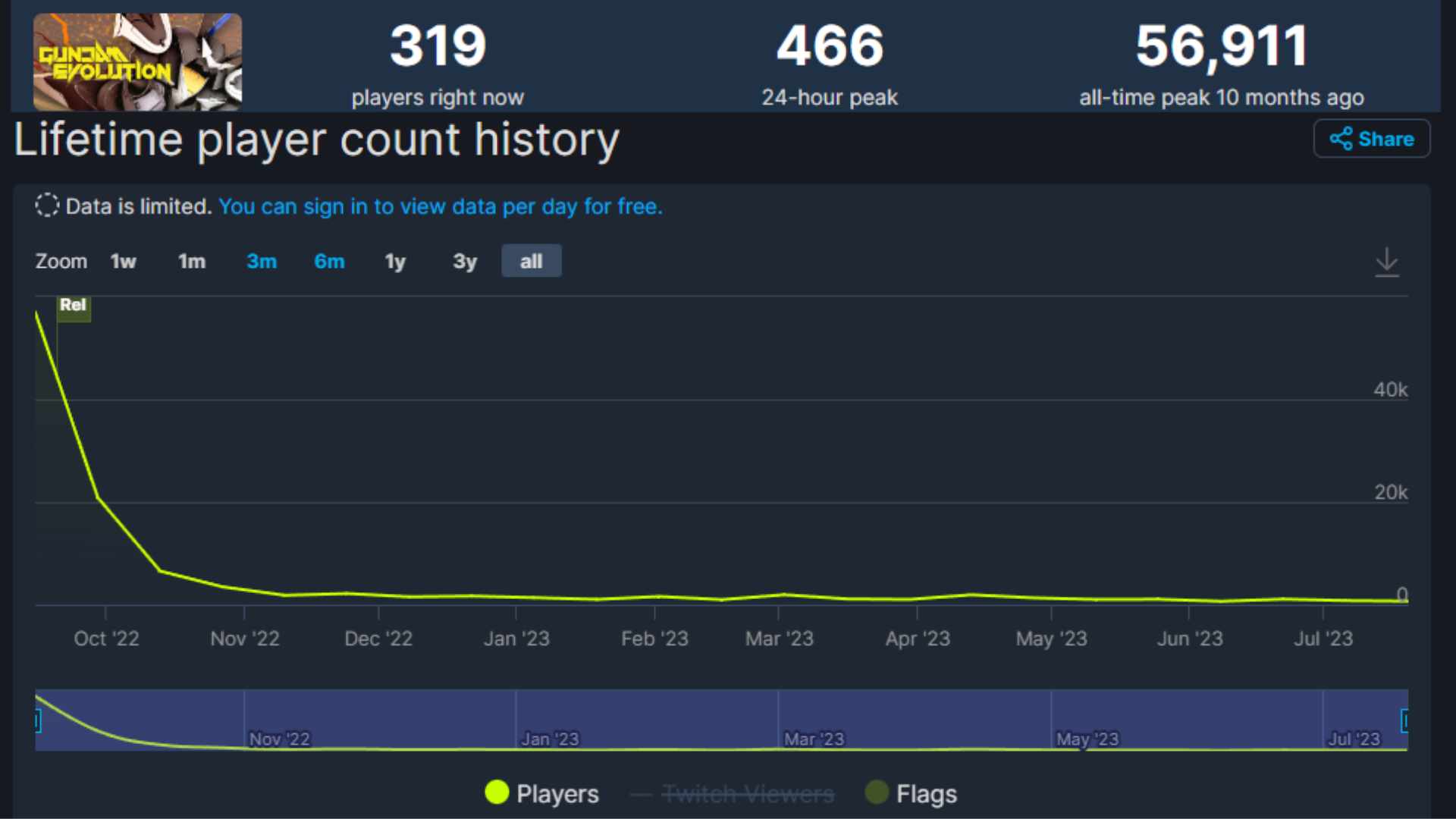Story Highlights
- GaaS and live service games have been around for a long time but recent years have presented intense monetization and time-gating to incentivize expenditure.
- Games have always been about making money. The advancement of technology & a change in the ecosystem has led to the adoption of microtransactions, solidified by consumer consumption.
- Companies need to prioritize game design that respects a player’s time & gives them the choice to wean out of a game & come back to it at a later time instead of forcing them to log in & grind every day.
The idea of “games as a service,” better known as GaaS, has been around for many years but recently gained a ton of momentum. Despite the consequences and side effects resulting from an oversaturation of games built on this formula, the gaming industry has continually churned out live service titles. A fresh example is Capcom‘s new intellectual property—Exoprimal.
In case you were not aware, Exoprimal basically pits you against history’s most ferocious predators—dinosaurs—while equipping you with futuristic war machines called Exosuits. Despite actually having some major positives, Capcom’s first big venture into the live service space falls into all of the traps that any game of that nature is fated to. It’s a hero-based multiplayer shooter after all.
Regardless of the things that Exoprimal handles well, the core issue isn’t the game, it’s the model that it’s based on and the way it’s designed. Live service games have gradually increased their presence along with several other problems that plague the modern gaming industry. Depressing PC ports, performance issues on next-gen hardware, bland & formulaic open worlds, and unhinged microtransactions.
It Has Always Been About Money
It goes without saying that if you’re running a business, you’re going to have to make money, & turn up a profit. Video games have always tried to make money, from back in the day with arcade machines to whatever you want to call the present state. It’s when new processes and methods to acquire money off of video games came to light that the industry started to pick up on it and made the gradual shift towards normalizing monetization.
The inception of live service, or specifically “games as a service“, as we know it began with the advent of MMOs like World of Warcraft, Final Fantasy XI, etc. I say that due to the element of paying a monthly subscription that enables you to access its content and play the game. Such a model guarantees a revenue stream long after the release of the game, allowing developers to continue development while generating easy money.

Furthermore, the gradual expansion of mobile gaming and gacha games have also contributed heavily towards the normalization of anti-consumer and draconian monetization practices. Classic applications and flash-based games successfully cashed in on our daily hours by monetizing it in the form of expendable energy used for various activities and locking resources used in said activities along with that energy behind a paywall.
Players willingly spend thousands upon thousands of dollars just for a chance at getting a JPEG that can potentially be lost forever should the game shut its servers down. It’s convenient for companies to pull in customers for such games due to the benefits of gaming on the go and the nostalgia factor associated with many of these gacha apps.
When people talk about psychology and companies manipulating consumer minds to squeeze out more juice from their wallets, the consumers themselves are the ones to point fingers and call it all a conspiracy. When those same people shell out the cash on such games and services while continually being disappointed and feeling as if they were cheated, they blame the company for everything in the book.
In my opinion, there’s a reason why it’s morphed into what it is today which has led to several problems with live service games in general, and the GaaS model altogether.
Design Philosophy Of Live Service Games
Most things and inventions aren’t bad by default but the way they’re handled is what determines how they’ll be perceived. The design philosophy in gaming has various forms and the advent of GaaS has led to companies leaning towards a more lenient and lackluster approach. Several factors contribute to this shift, including but not limited to, the cost of developing games and the subsequent returns.

Chalking it all up to development costs would be disingenuous and actively detract from the industry’s past achievements. However, the rising costs of development, a result of focusing on things without having priorities straight, has also increased the risk of going out of business should a project fail. Given that it’s a possibility and considering the advantages of live service, developers dove into it and consumers responded with their wallets.
Unlike a finished product, live service games and other GaaS titles are explicitly considered to be services. Since it’s meant to be an ongoing title, consumer expectations are in line and it’s expected for the game to have certain shortcomings. Said shortcomings will be patched as time goes on and feedback starts to pour in from the players. This complacency inhibits creativity.
Evidence of this can be found by looking around and seeing how many free-to-play and pay-to-play, hero-based multiplayer shooters are there on the market. Too much of one thing will obviously lead to saturation but it wouldn’t be that big of a deal if this was all. The crux of the issue is how games are designed to be a time sink, thus coming off as a chore or daily grind once the initial honeymoon period is over.
Bungie‘s Destiny 2 is a perfect example. The game has turned into a microtransaction hell on top of being a cesspool of redundancy combined with a convoluted onboarding system. It’s actively designed to get the player to spend money on each and every facet of the game despite the player paying for expansions and seasons. As someone who spent hundreds of hours in Destiny 2 before quitting, I can say that it’s highly anti-consumer.
It’s because of how these games are designed with the idea of generating more revenue rather than making a game that truly stands out and evolves upon a formula that has given live service games and GaaS a bad reputation. Marvel’s Avengers is another example of this. After all, there’s a reason why games like that end up in the grave but Fortnite and co. continue to thrive.
Just recently, it was announced that Gundam Evolution is set to end service on November 29, 2023. It was, like many others, a free-to-play hero shooter set in the iconic world of Gundam. It hasn’t even been a year since its launch and the announcement of its death is out. There are myriad factors that have contributed to this failed project, but the greatest one is how it handled monetization.
What’s even more saddening is the fact that Gundam Evolution peaked at almost 57,000 players at its launch and within fifteen days it lost over 70% of its players. Since then it has continually lost players until it all went flat. The peak count within 24 hours is sitting at 466 and that’s just sad because there were people who worked on this game for years but greed spelled its end.

Another element that’s incorporated into live service games is time-gating. This idea is combined with the blatant disrespect for the player’s time. Something that one of the biggest MMOs in the market has addressed.
Final Fantasy 14 & The Importance Of Respecting A Player’s Time
The implementation of battle passes serves a purpose. By restricting the content of passes, premium and otherwise, behind a duration of grinding, you are disrespecting the player’s time. While it’s possible to deflect this argument by playing the “target audience” card, it’s actually disrespectful to the target player as well, more so if the content is mundane.
People often put Final Fantasy XIV on a pedestal and despite many of its shortcomings, there’s a lot that it does that genuinely deserves credit. The definitive factor is how the MMORPG is designed, and its fundamentals. Since its relaunch in 2013, Naoki Yoshida and his amazing team have worked to make this title as accessible and consumer-friendly as possible. And that still generates revenue and has led to a gradual increase in players.

The dynamic here is what’s really impressive because many of the systems and quests in FF14, Relics for example, are designed to be time-intensive but are released as intermittent content. And even when the time is up, the content doesn’t go away. In fact, it becomes relatively easier and the grind becomes less time-intensive. Even with this, there’s never a time when you feel like you can’t take a break and try something out.
Prior to the release of Stormblood in 2018, No Clip made a fantastic, three-part documentary on the calamity of 1.0 and the rebirth of FF14. Naoki Yoshida went on to say something that speaks volumes about the state of games in the last decade. His philosophy on game design and the comment from that time, 13:00 in the video above, holds true to this day and is reflected in Square Enix‘s flagship MMORPG.
With FF14’s game design, I never want to make it so that you have to play it continously and have to log in every day. I want to avoid making people feel that if they stop playing once, they won’t be able to return because everyone is so busy, and I don’t think everybody could log in every day and invest time to play one game. So I think it’s alright that people return when there’s a major update, play through it at once, and then eventually wean out or slow down to play other games or do other things in life. I think MMOs have to be like that moving forward or they won’t stand a chance.”
With the kind of mentality Yoshida-san has expressed through his words and presented in FF14, it’s evident that there will be ups and downs between major expansions and patches. But that’s what allows such fundamental design to shine the brightest. By respecting the player’s time and designing your game in such a fashion, you’re at a higher chance of retaining your playerbase in the long term.
Of course, such things aren’t applicable in all situations but if developers and companies who work on live service and other GaaS titles tried to keep these principles in mind, it’s possible that they’d discover a unique way to implement these ideas, have a respectful product, and turn up a profit.
Live Service – The Problem’s Resolution
Like I’ve said before, most things are not inherently bad; it’s their implementation and the person’s intentions that determine their value. It’s because this lazy method of game design has been favorable in terms of generating revenue that these companies are incentivized and forced to make more of it. Consumers should demand proper compensation for the amount of money and time they spend.
You can argue that these values differ from person to person, yet the common factor among every player is the inevitable burnout resulting from the constant monetization & disregard for the playerbase. It all comes down to designing a good game & being honest with the fans, whether it has live service elements or not doesn’t matter. Although, the ongoing trend has stigmatized the model itself.
Considering how much power consumers possess, the best way to take action against live service and GaaS would be to answer with money. Not by spending it, but withholding it. The goal should be to demand creative and respectful game design with quality gameplay that doesn’t paint its live service nature in a bad light. This also includes cutting down on draconian monetization and rethinking priorities.
I’m aware that some intellectuals will say, “Just don’t pay for it.” But that’s easier said than done when the psychological manipulation is subtle to this extent. This is something that was taken to court, nations took action against loot boxes, and Epic got into legal trouble with a gargantuan fine. When it was elevated to this level, you have no room to trivialize it.
This dynamic is something the majority of the two sides in this industry are aware of. Maybe one day it will change and we’ll see GaaS in a whole new light but for now, it’s nothing but the easy way to squeeze money out of consumers.
Thanks! Do share your feedback with us. ⚡
How can we make this post better? Your help would be appreciated. ✍
another great article to put my some of my thoughts on videogames into words



